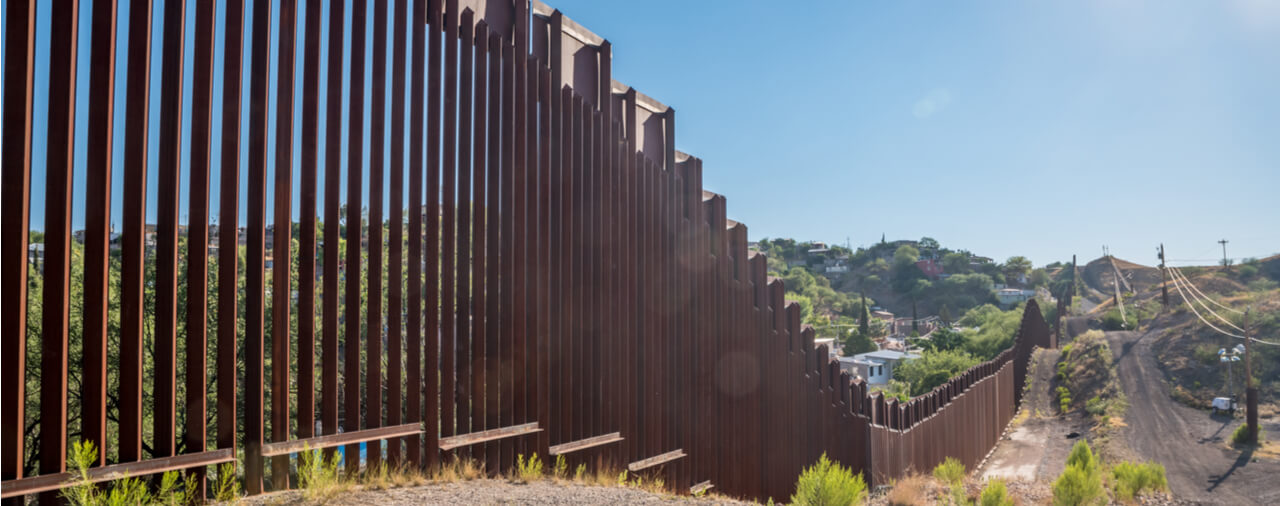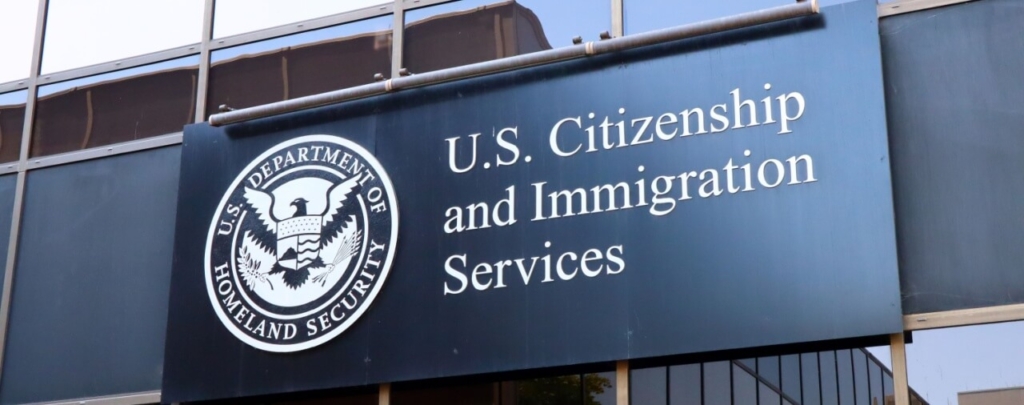On December 5, 2017, the United States Customs and Border Protection (CBP) published the Southwest Border Migration statistics for fiscal year 2017 [PDF version]. The Department of Homeland Security (DHS) also released national border security statistics. The fiscal year ran from October 1, 2016 to September 30, 2017. In this blog, we will examine the CBP statistics including thoughts on the numbers from leading figures at the Department of Homeland Security (DHS).
Sharp Decrease in Apprehensions at the Southwest Border
In total, 303,916 aliens were apprehended at the Southwest Border in FY 2017. This represented a decrease of 111,900, or 24%, from the 415,816 apprehensions in FY 2016. As we will see later in the post, the overall number of apprehensions in FY 2017, of which 98% occurred along the Southwest Border, were the lowest since FY 1971.
The following chart breaks down the number of apprehensions in FY 2017 by month:
[Click image to view full size]
The early months of FY 2017 saw an unusually high number of apprehensions relative to recent trends. However, after the inauguration of President Donald Trump, the number of apprehensions decreased sharply, with April representing the lowest number in years [see blog]. After the nadir in April, the number of apprehensions gradually increased each month through the end of the fiscal year, which is generally expected to occur during the summer months. Nevertheless, the monthly totals remained lower than they have generally been in previous years.
It is worth noting that the number of unaccompanied alien children and family units apprehended at the border increased sharply starting in June and peaking in August 2017.
Lower than Average Number of Inadmissibles at the Border
In FY 2017, 111, 275 individuals presented themselves at ports of entry on the Southwest Border and were deemed inadmissible. Although low, the number of inadmissibles at the border was not as far out of step with recent annual trends as was the number of apprehensions. The 111,275 inadmissibles in FY 2017 was a sharp decrease from the 150,825 in FY 2016, but it was nearly identical to the 114,486 in FY 2015 and slightly more than the 90,601 in FY 2014.
The following chart breaks down the number of inadmissibles in FY 2017 by month:
[Click image to view full size]
The trend line for inadmissibles was similar to that for apprehensions. There was a significant drop-off in the number of inadmissibles during February, the first full month of the Trump Administration. The two months that saw the fewest number of inadmissibles were March and April, with March seeing the fewest at 4,393 [see blog]. From May on, the number increased each month through the end of the fiscal year. Similarly to the apprehensions, unaccompanied alien children and family units comprised a larger proportion of total inadmissibles as the overall number increased during the course of the summer.
Apprehension and Inadmissibles Statistics from FY 2012 to FY 2017
The following, courtesy of the CBP, are the month-by-month statistics for apprehensions and inadmissibles at the Southwest Border over the previous six fiscal years:
[Click image to view full size]
From October to January, FY 2017 saw more apprehensions and inadmissibles in each month than during the same period of any of the five previous fiscal years. However, beginning with President Trump’s first full month in office, FY 2017 had the fewest combined apprehensions and inadmissibles during each month in the same sample through the end of the fiscal year. The numbers in March, April, May, and June were dramatically lower than in any of the corresponding months in the previous five fiscal years. However, in September 2017, the number of inadmissibles and apprehensions was, while lower, closer to the numbers recorded in September in FY 2012 through FY 2015.
National Statistics and Comments from DHS
The DHS discussed the statistics in a year-end press release [PDF version].
Above, we discussed statistics for the Southwest Border only. Overall, the DHS reported that nationwide there were 310,531 apprehensions by the CBP and 216,370 inadmissible cases. This represented a 23.7% decrease from FY 2016. The DHS noted that there was an especially sharp decrease from January 21, 2017 — President Trump’s first full day in office — through April 2017. It added that April 2017 “was the lowest month of border enforcement activity on record” [see blog].
The Acting Deputy Commissioner of CBP, Ronald Vitiello, noted the “historic low numbers” of apprehensions in FY 2017. However, he expressed concern “about the later month increases of unaccompanied minors and minors with a family member.” Furthermore, he also expressed concerns “about the significant uptick in the smuggling of opioids and other hard narcotics … which generally increase when illegal border crossing spike.”
The CBP also expressed concern with the increase of family unit and unaccompanied alien children apprehensions and inadmissible cases over the latter months of FY 2017. To this effect, it stated that it “continues to be concerned about steady increase in the flow of unaccompanied children and family units from Central America, as transnational criminal organizations continue to exploit legal and policy loopholes to help illegal aliens gain entry and facilitate their release into the country.”
Lowest Number of Apprehensions Overall in 45 Years
Not only were the 310,531 apprehensions a stark decrease from FY 2016, but it also represented the fewest apprehensions in 45 years since the 302,517 in FY 1971 [PDF version]. Although there has been spikes, the trend in apprehensions has been positive over the past decade. Between FY 1983 and FY 2006, all but four years saw at least 1,000,000 apprehensions at the Southwest Border. Since FY 2007, the highest number was 876,704 in FY 2007. Prior to FY 2017, the low-water mark was 337,117 apprehensions in FY 2015, nearly 8% more apprehensions than the new low in the past fiscal year.
Analysis
It is clear that the number of apprehensions and inadmissibles decreased sharply when President Trump initially took office, and decreased dramatically in the spring. This downtick is interesting since many of the policies set forth in President Trump’s January 25, 2017 executive orders on border security and interior enforcement and the implementing memoranda from February 20, 2017, have yet to be fully implemented [see article]. For example, the Trump Administration has not been able to make meaningful progress on a border wall nor has it announced or fully implemented new policies regarding expedited removal or unaccompanied alien children. Interestingly, the Department of Justice (DOJ) has been active in announcing new policies to increase prosecutions for alien smuggling and move immigration judges to locations in close proximity to the Southwest Border [see article].
While the border security statistics are promising, especially regarding apprehensions at the Southwest Border, it is important to note that it is unknown whether the trend is sustainable. For example, the summer months of FY 2017 saw disproportionately large increases in the number of apprehensions and inadmissibility determinations for family units and unaccompanied alien children. Furthermore, the number of drug trafficking cases did not decrease in numbers commensurate with the decrease in illegal border crossings and, in fact, increased in some months.
It is also worth considering, going forward, how much of the decrease in illegal border crossings and inadmissibility determinations was due to actual policy changes by the Trump Administration, and how much of it was due to perceived or feared policy changes. In either case, the position of the Trump Administration going forward and the manner in which it seeks to implement new policies in President Trump’s executive orders will likely have a key role in whether the number of illegal border crossings continues to decrease or returns to pre-Trump levels. Another issue that bears watching is whether Congress passes a legislative replacement for the outgoing Deferred Action for Childhood Arrivals (DACA) program, and which, if any, new border security and interior enforcement measures accompany it.
We will continue to update the website with information about interesting immigration enforcement statistics and important developments in immigration law and policy during the Trump Administration going forward.








